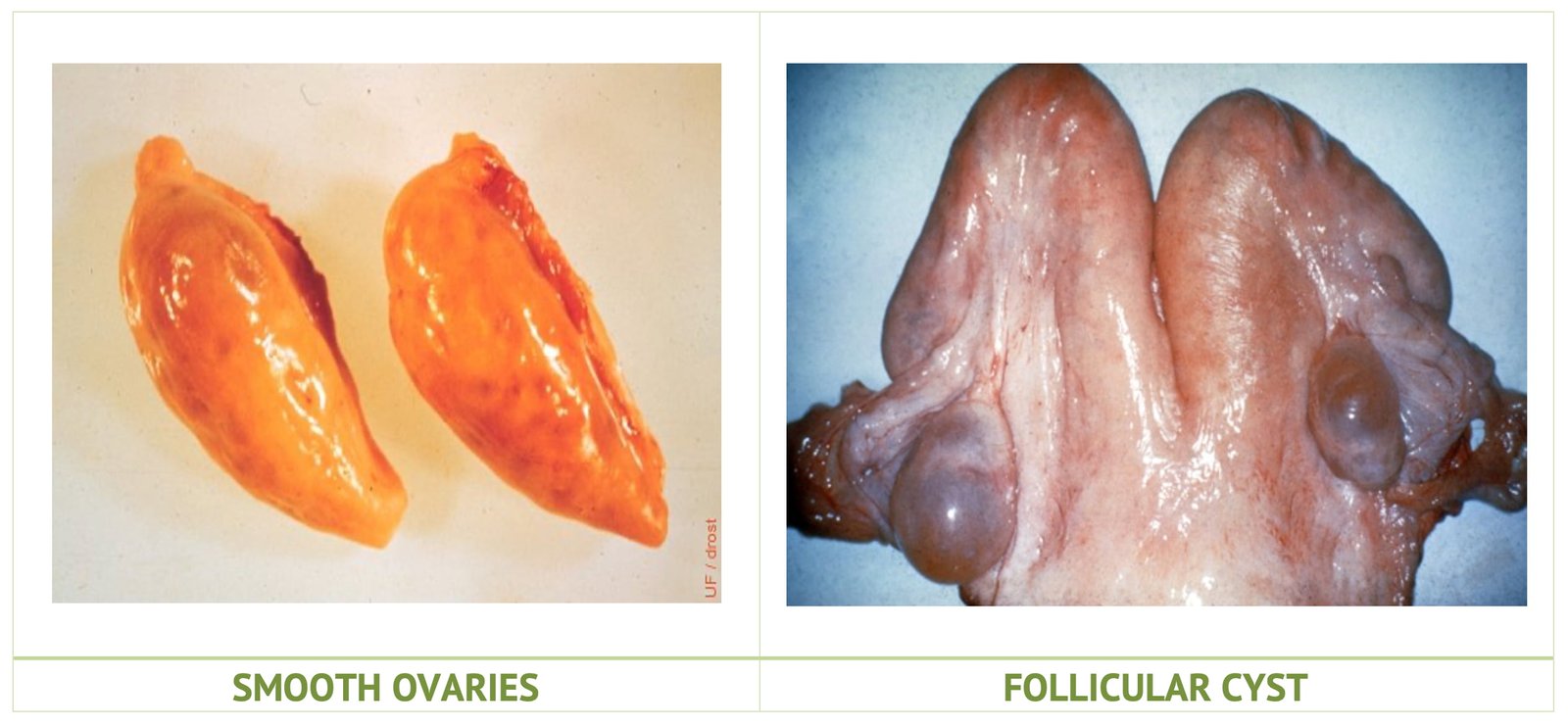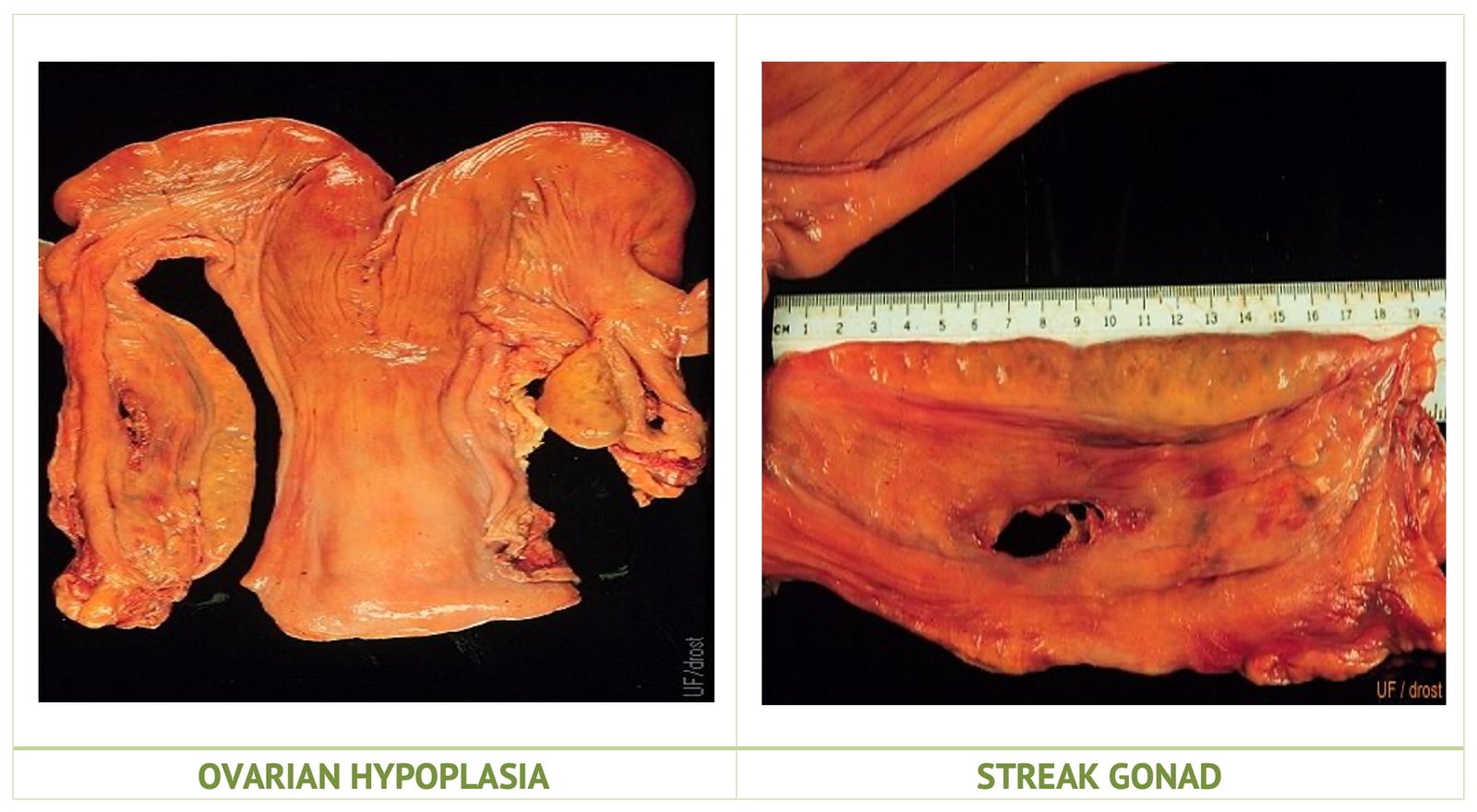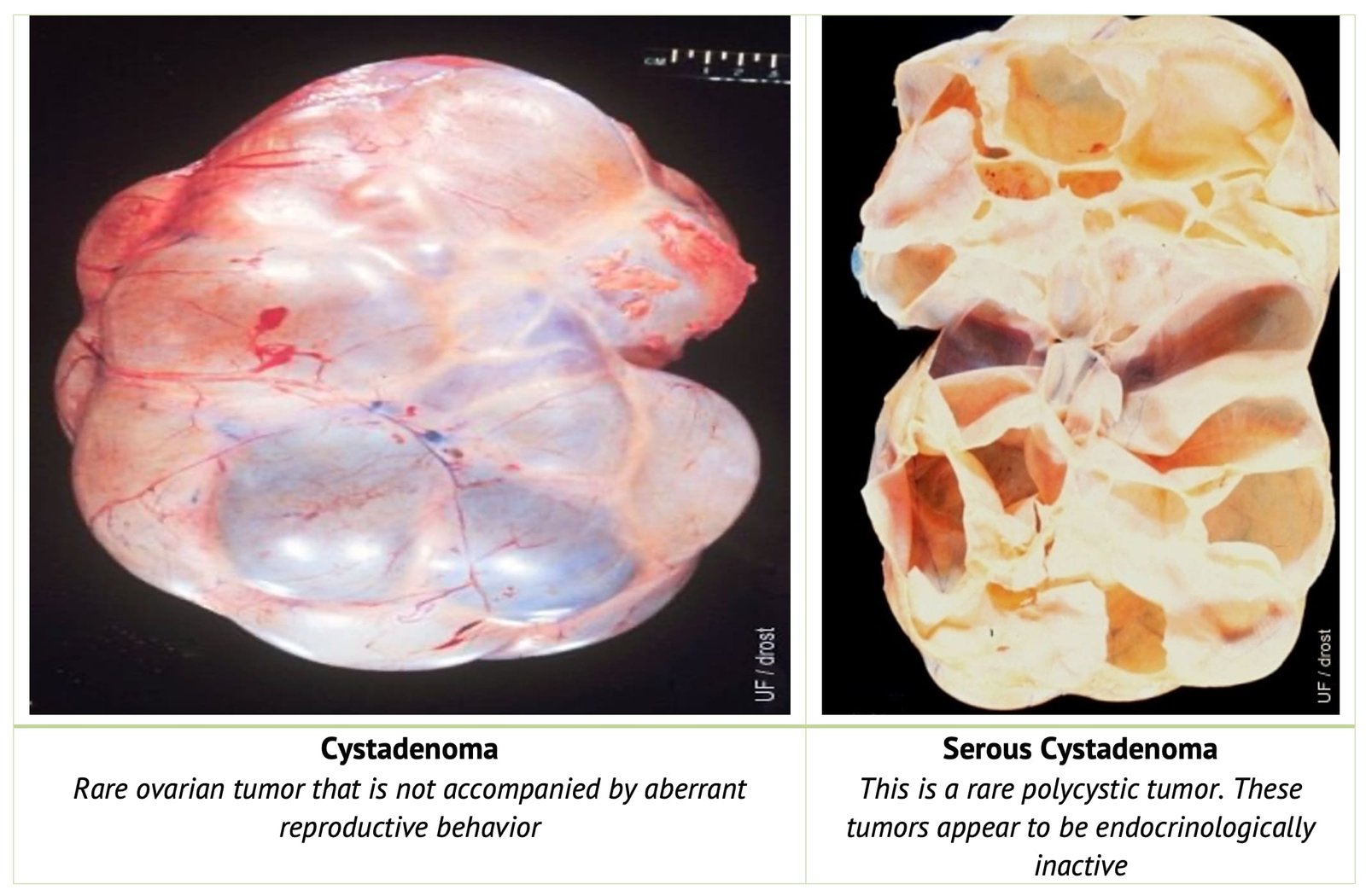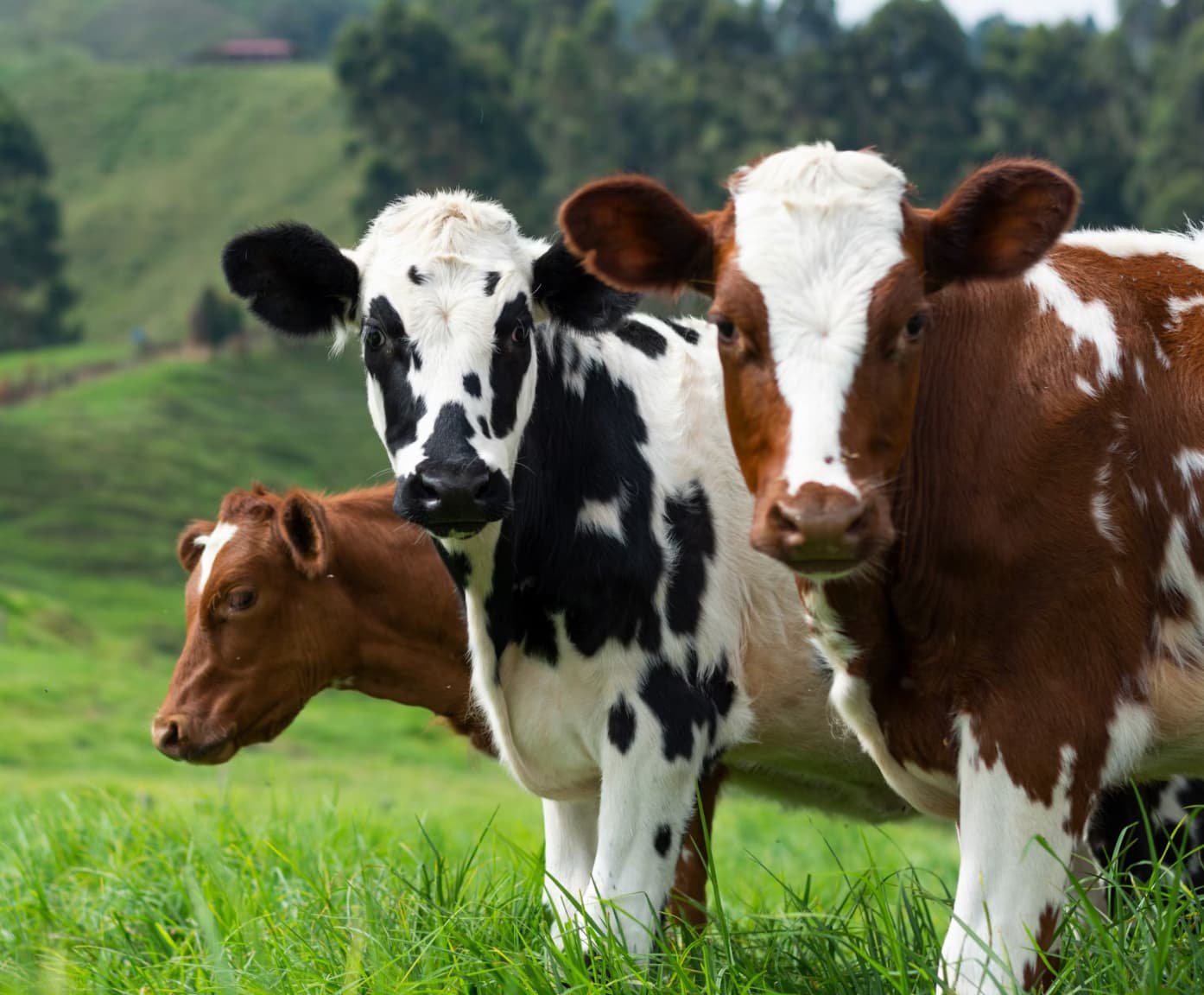TABLE OF CONTENTS
Reproductive Abnormalities of the Ovaries in Animals
Reproductive abnormalities of the ovaries in animals can significantly impact fertility and overall reproductive health.
Common conditions include smooth ovaries, ovarian cysts, ovarian hypoplasia, underdevelopment of ovaries in heifers, ovaritis or oophoritis, and miscellaneous conditions such as abscesses and tumors. Early diagnosis and appropriate management are essential to ensure reproductive health.
Reproductive abnormalities of the ovaries in animals are:
- Smooth Ovaries
- Ovarian Cysts
- Ovarian Hypoplasia
- Ovarian Hypoplasia
- Underdevelopment of Ovaries in Heifers
- Ovaritis or Oophoritis
- Miscellaneous Ovarian Conditions
Smooth Ovaries
- Ovaries are smooth
- Repeated palpation confirms the presence of smooth ovaries. Systemic or local causes should be investigated.
The detection of smooth ovaries at a single examination in cycling cows, especially during the first few days following ovulation when the developing CL is not palpable is perfectly normal.

Ovarian Cysts
Ovarian cysts are fluid-filled structures greater than 2.5 cm in diameter.
It should be differentiated from parovarian cysts, which do not involve the ovary but rather involve remnants of the mesonephric or paramesonephric duct systems.
Ovarian Hypoplasia
Ovarian hypoplasia is found in all breeds and may be bilateral or unilateral. Bilateral hypoplasia is found in heifers only and is always associated with sterility .
Cows and heifers which are affected unilaterally might reproduce relatively normally.
The degree of hypoplasia varies and the affected ovary might be recognized as a barely distinguishable thickening of the mesovarium. In other cases, the ovary might be slightly larger.
Whenever the dimensions of the ovary are found to be less than 2 cm x 0.5 cm x 0.5 cm this disease should be suspected. The affected gonads are are hard and static. Functional structures such as follicles or corpus luteum are not present.
In cases of doubt, re-examination should be recommended, especially for differentiation from ovarian atrophy.
Hypoplasia of ovaries has been found to be hereditary in nature, and it is very important to detect the unilateral cases which might reproduce and transmit the disease to offspring.

Underdevelopment of Ovaries in Heifers
Underdevelopment of ovaries in heifers usually bilateral and is found primarily in poorly fed and managed heifers
Most commonly heifers of the same age are affected.
The ovaries are small and static, consistency varies from flaccid to fibrotic while there is atrophy of the uterine wall.
It is difficult to differentiate this condition from ovarian hypoplasia based on single examination. Re-examination, preferably after correction of feeding practices, might be necessary.
Ovaritis or Oophoritis
Inflammation or infection of the ovary also known as ovaritis or oophoritis occurs:
- Secondary to trauma.
- To infection from the uterus that passes through the oviducts.
- By extension of infection through the uterine walls.
Associated with marked enlargement of the ovary. In acute ovaritis, enlargement is due to edema.

Diagnosis of chronic ovaritis is based on enlarged fibrotic ovaries and presence of organized adhesions to the surrounding structures, primarily to the mesosalpinx.
Miscellaneous Ovarian Conditions
Miscellaneous ovarian conditions include abscesses and tumors. Both of these conditions result in a greatly enlarged, usually firm ovary and may be associated with bursal and uterine adhesions.

Abscessed ovaries may have a softened area within the firm mass and may cause pain when palpated.
Unaffected ovary may function normally so that cyclic structures may be palpated.


